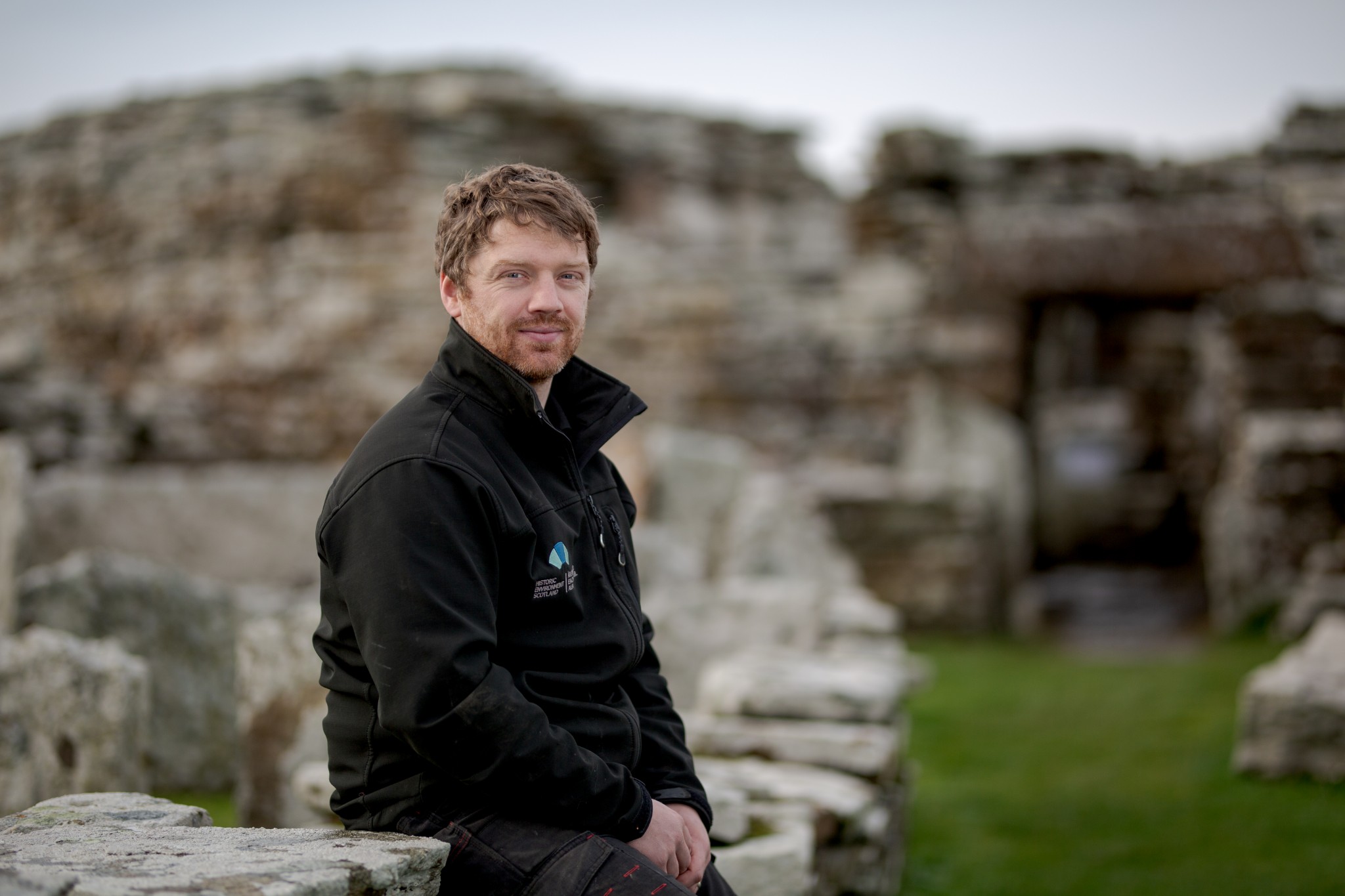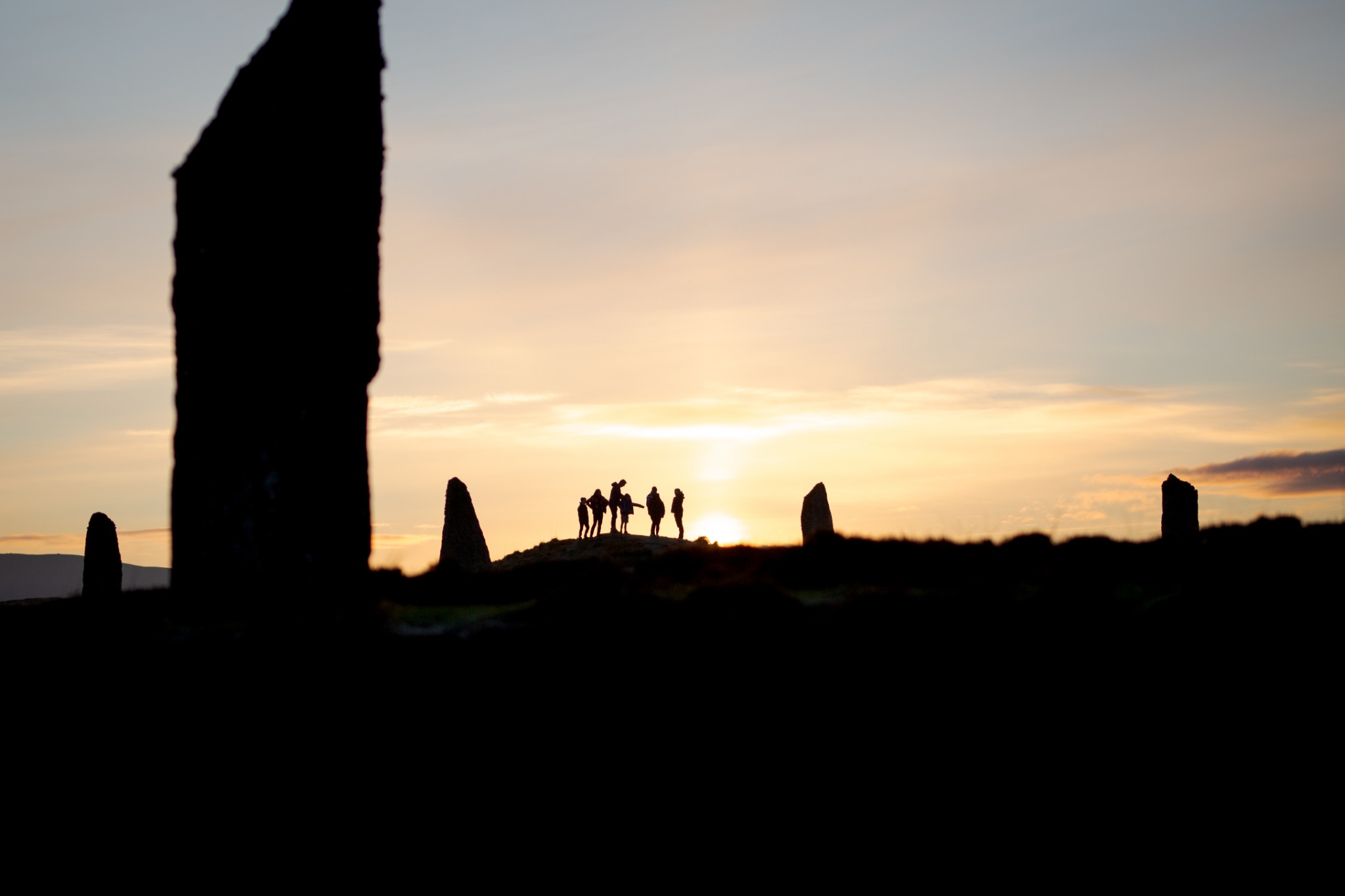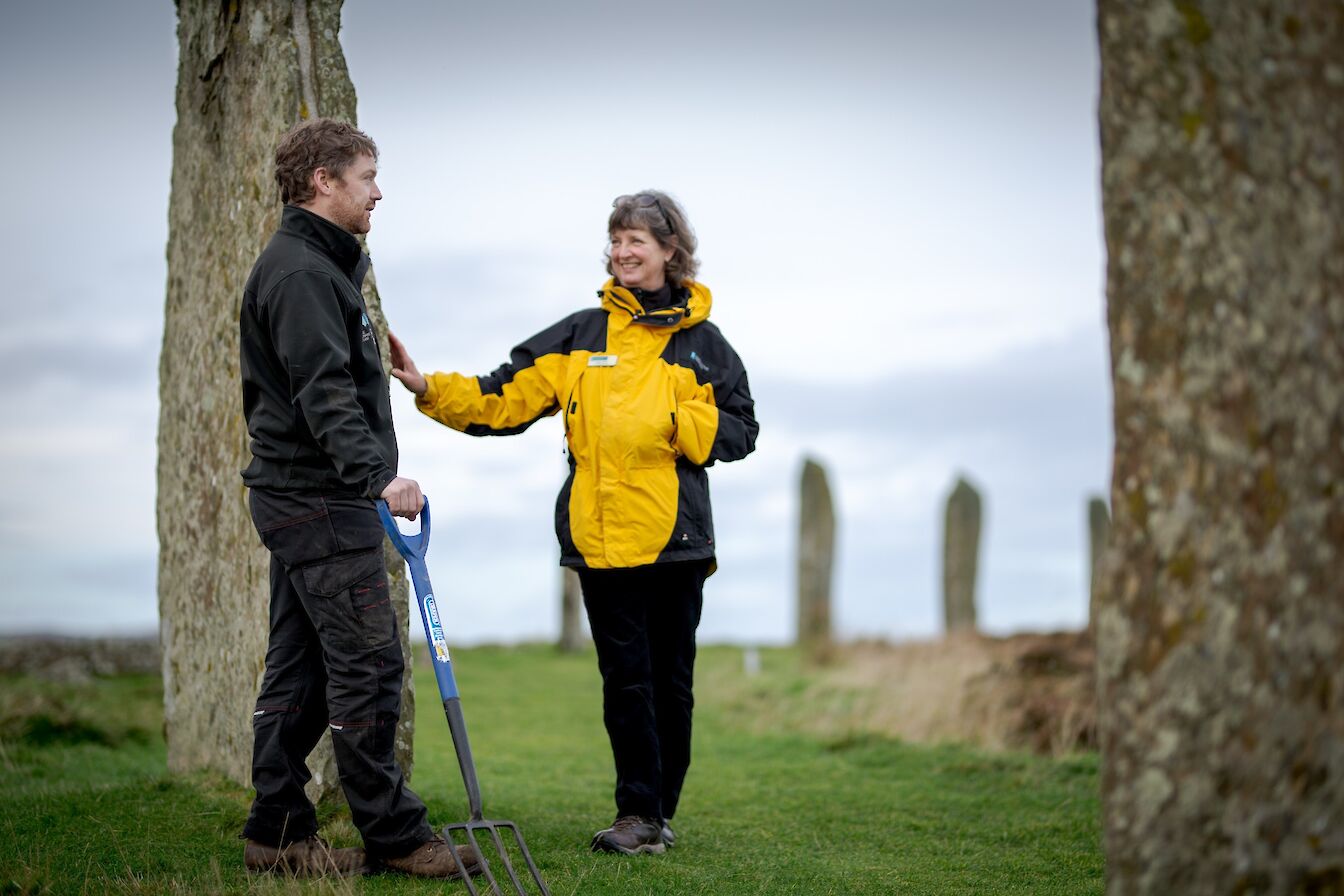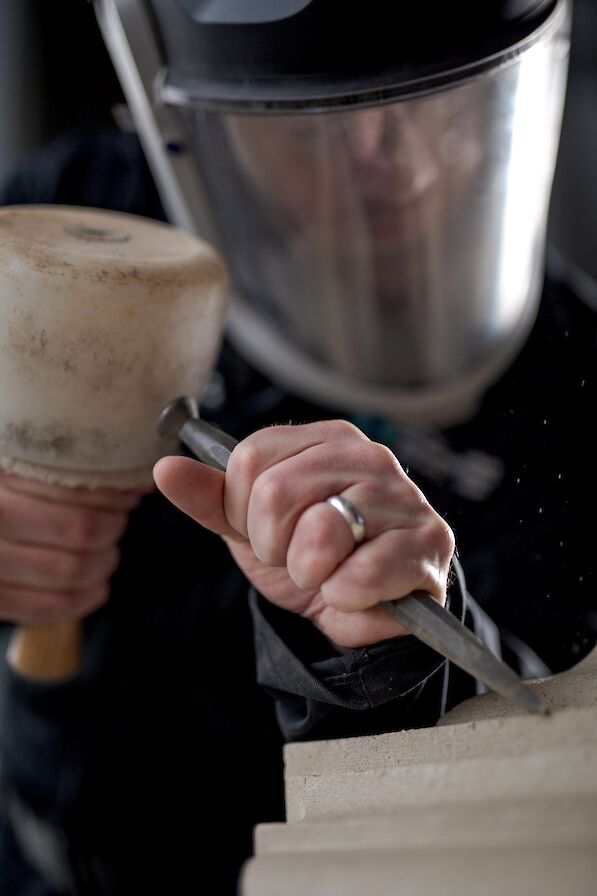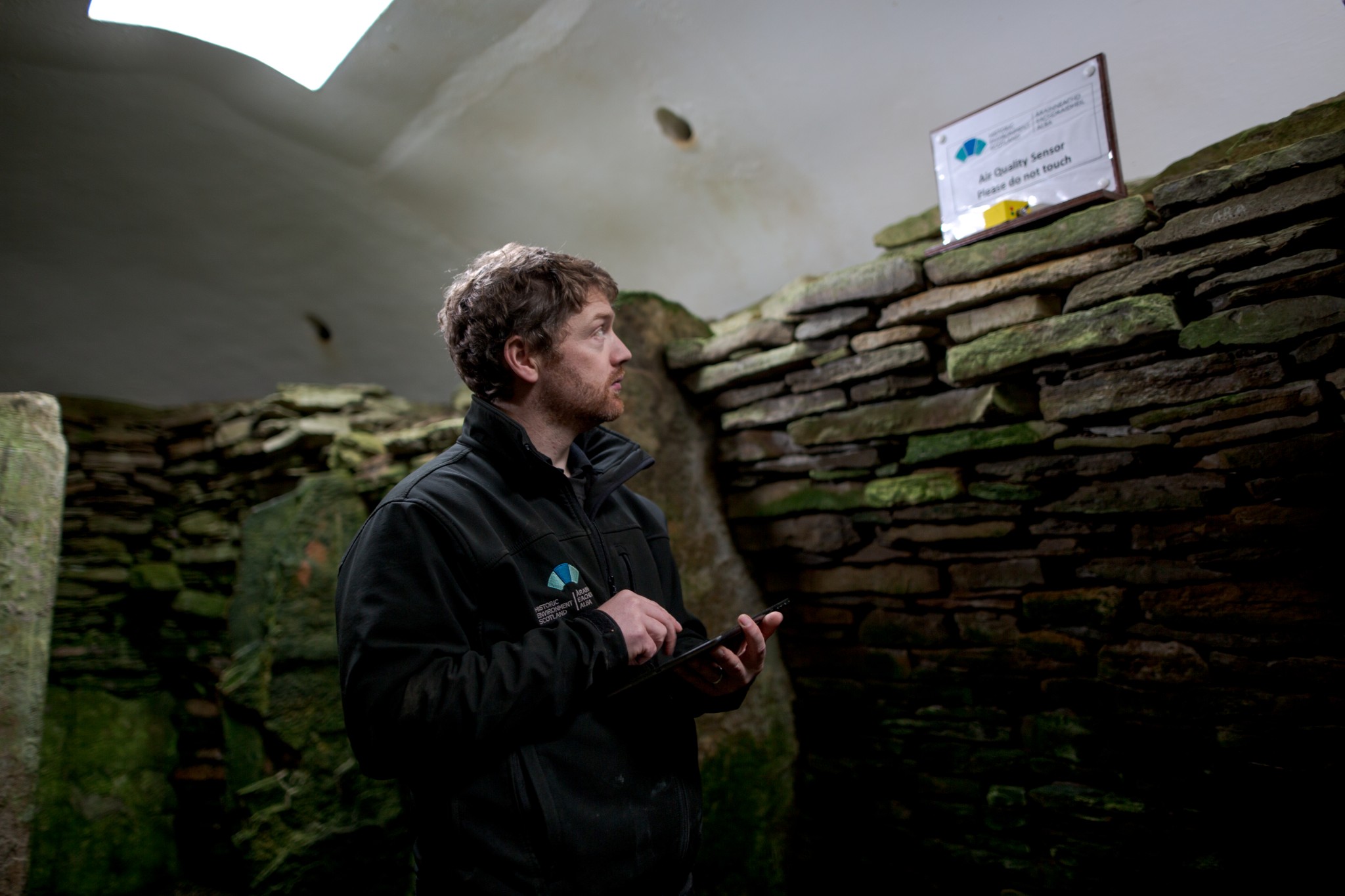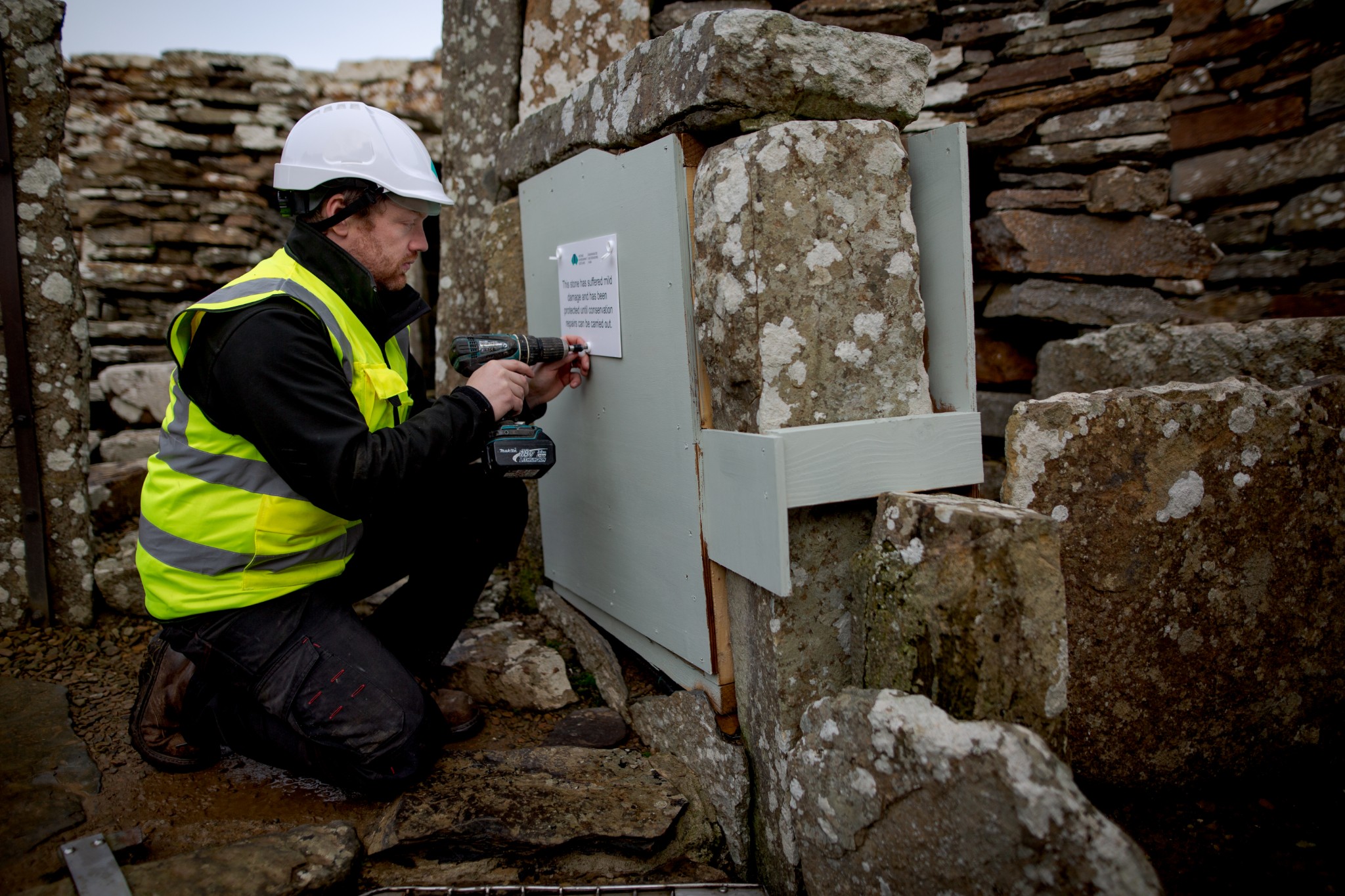If you’ve visited many of Orkney’s unique historic sites then there’s a good chance that you’ll have bumped into some of Historic Environment Scotland’s (HES) friendly and knowledgeable Stewards, Guides or Rangers.
But you’re possibly less likely to have met the small, dedicated team of men and women who keep some of Scotland’s most important buildings and monuments looking their very best.
Robbie Macvie didn’t start his career as a stonemason. Like many of HES’s local staff he came from an entirely different background. “I actually did a degree in nature tourism,” he laughs. “It probably seems a long way from stonemasonry, but when you come out to a site like this you realise that skills you pick up in a previous life can actually be quite relevant.”
We’re walking up the path towards the Ring of Brodgar, part of Orkney’s unique UNESCO World Heritage Site, known as The Heart of Neolithic Orkney. It’s one of our most iconic, and most popular, sites – instantly recognisable to people around the world.
If you time your visit well then you should still find plenty of peace and tranquillity here among the ancient stones, but there’s no doubt they have become more popular over the past decade or so. That additional footfall means HES has had to find innovative ways to protect these sites against erosion without imposing on the visual aesthetics, or the unique feel of this place, where visitors appreciate the sense of being surrounded by structures that pre-date the pyramids of Egypt. Here, HES technicians and architects have worked closely with the maintenance teams to design and install a much more robust network of paths around the stone circle.
“Laying this fibre matting and the improved path structure has made a huge difference,” says Robbie. He’s using a fork to gently aerate a section beside the path, where the prospect of a handy shortcut has proved too much for one or two visitors.
“There was a lady here recently in a wheelchair and her friend managed to take her right around the stones. Strictly speaking you wouldn’t advertise it as being fully ‘wheelchair-friendly’ as there are some limitations to what you can do at a site like this with how it was constructed, but the fact that we’re able to provide further access is really great. And of course, the improvements have made the whole path network a lot more robust, which is good for everyone.”
Robbie started as an apprentice stonemason with HES ten years ago. Fully qualified since 2016, he’s passionate about not just improving his own skills, but also passing that knowledge on. “It’s great here that we’ve got such a wide range of ages in the team,” he says “The older boys have bits of knowledge that you can only gain through working on these kind of sites for years and years, and they’re really good at passing that onto us. That’s something we can hopefully pass on in the future too.”
But I have to highlight that he’s standing with a garden fork in his hand rather than a mallet and chisel. Is this really a job for a time-served stonemason?
“Well, that’s just part of the job,” laughs Robbie. “Most of us are trained as masons, but the majority of the time you’re doing general maintenance work. The thing about the masonry skills is that when you need them, you need them. The actual structures and monuments we’re looking after are made of stone and you need to have the skills, and the understanding of traditional building techniques, in order to care for them with the respect that they need.”
It’s an impressive portfolio of sites that the team in Orkney have to look after, from the big-ticket Neolithic locations such as the Ring of Brodgar and Skara Brae, to the Medieval Earl’s and Bishop’s Palaces, right down to the tiniest chambered burial cairns.
Robbie does still manage to keep his hand in with the masonry work. Earlier in the day we’d met at the workshop where he was busy carving a stone moulding. “This piece is actually heading south.” he explained. “We work closely with colleagues in different parts of Scotland, so it kind of makes the most of everybody’s skills. There’s not a big lot of demand for this type of stonework here in Orkney, so if I get asked to do a piece like this for another area then that’s great. It’s good for me to be doing that, and hopefully I’m not getting too rusty!”
While COVID may have kept many of us apart over the past twenty-odd months, Robbie says one of the positive effects has been improved communication across the network of HES maintenance teams. “When we came back after furlough there was as much distancing put in place as possible,” he says “We were split up into smaller teams, all of us working much more locally. For instance, I live in the West Mainland, just on the edge of the World Heritage Site, so I was among the group looking after that area, whereas the ones from Kirkwall and the east were looking after their side of things.
“Because of that element of remote working, we were all issued with iPads that we’d use to take photos of any issues, uploading and logging them straight away. It’s great because it means that everybody across the whole network can see instantly what’s needing done, it can be prioritised appropriately and then dealt with.
“What we do in the conservation and maintenance team here is just part of this much wider organisation, from architects and the collections team to the rangers and visitor-facing staff. Everyone brings their own knowledge and skills and all of that plays an important part in maintaining these sites.”
The iPads are also being used to log details from airflow monitors within many of Orkney’s chambered burial tombs. It was one area of frustration for visitors early last year as these sites – the most numerous in Orkney – took time to reopen. But Robbie says that, with the improved understanding of airborne transmission of COVID, it was essential to know that ancient structures were safe to reopen.
“Airflow within the tombs is something that nobody had really looked to measure before,” says Robbie. We had to find out how long it would take for the air that is breathed out to entirely dissipate from inside one of the cairns. What the monitors have shown is that process takes a few minutes, which was really reassuring. Thankfully they didn’t make their buildings as airtight back in those days!”
It’s mid-afternoon by the time we’ve taken an airflow reading from Unstan Cairn in Stenness. We’re heading towards one of my favourite sites, the Broch of Gurness, overlooking the tides of Eynhallow Sound towards Rousay, a modest size island with no less than five structures cared for by HES staff. The mallet and chisel, which gave way to a fork, which gave way to an iPad, have now given way to a cordless drill. We’re here to replace signage on some timber boarding, being used to support a stone lintel within this Iron Age broch while it awaits a full repair.
“2020 was a bit frustrating. For a large part of the year there were no visitors at the sites, the weather was fabulous and you’re thinking ‘these are perfect conditions for getting work done!’”, recalls Robbie. “But we just had to do our bit, stay home and help keep the local community safe. There were bigger things at stake, and we’re getting caught up with the work again now. I think when you’re dealing with structures as old as these it does teach you about the value of patience.”
We’ve travelled through several millennia of history in just a few hours. You take this kind of history somewhat for granted when you live in Orkney. But does Robbie feel a sense of responsibility for these extraordinary sites in the care of him and his colleagues?
“Oh, absolutely! There’s just such a rich natural and cultural heritage in Orkney and being able to play a part in conserving sites such as Skara Brae and the Ring of Brodgar, which have been here for more than five thousand years, is a huge privilege.”
Find out more about Historic Environment Scotland and the work it does via its official website.
